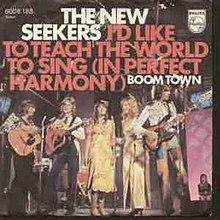Rhythm Of The Rain - THE CASCADES - With lyrics
https://youtu.be/pt57gA1_W7c
Oh!
Carol ( 1959 ) - NEIL SEDAKA - Lyrics
Diana
( 1957 ) - PAUL ANKA - Lyrics

This blog is about the entrants in the year 1960, to the Faculty of Medicine, University of Ceylon, Colombo. The email address for communications is, 1960batch@gmail.com. Please BOOKMARK this page for easier access later.Photo is the entrance porch of the old General Hospital, Colombo, still in existence. Please use the search box below to look for your requirement.
| "I'd Like to Teach the World to Sing (In Perfect Harmony)" | |
|---|---|
| Single by The Hillside Singers | |
| from the album I'd Like to Teach the World to Sing | |
| Released | 1971 |
| Label | Metromedia |
| Writer(s) |
|
| Producer(s) | Al Ham |
| "I'd Like to Teach the World to Sing" | ||||
|---|---|---|---|---|
 | ||||
| Single by The New Seekers | ||||
| from the album We'd Like to Teach the World to Sing | ||||
| B-side | "Boom Town" | |||
| Released | 1971 | |||
| Length | 2:20 | |||
| Label | Philips | |||
| Writer(s) | Roger Cook, Roger Greenaway, Bill Backer and Billy Davis | |||
| Producer(s) | David Mackay | |||
| The New Seekers singles chronology | ||||
| ||||
|
Play Music
|
|
|
|
This article needs
additional citations for verification. Please
help improve this article by adding
citations to reliable sources. Unsourced material may be
challenged and removed. (May
2011)
|
This is really the best fun commercial I have
seen in years
|